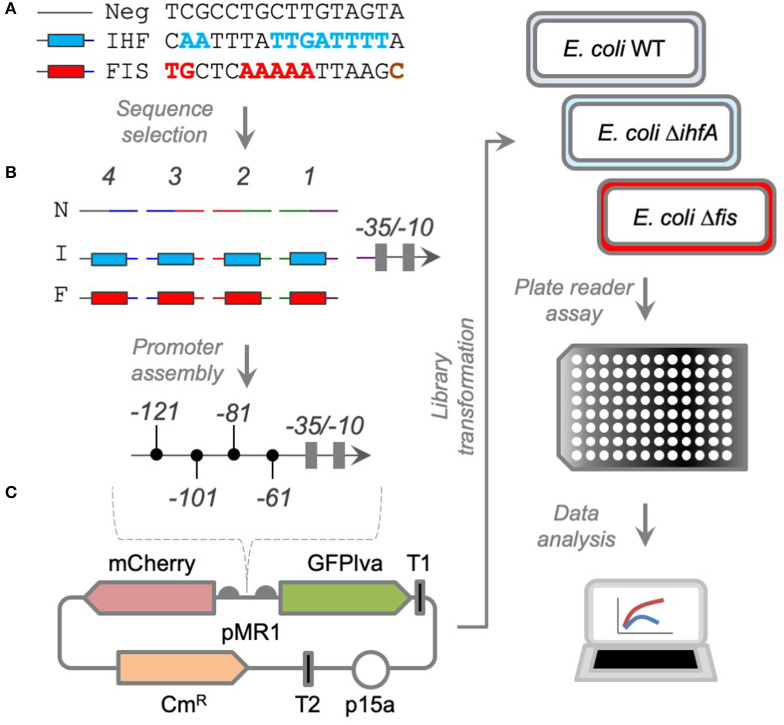Figure 1.
Strategies to construct synthetic complex promoters. (A) DNA sequences harboring the consensus sequence for IHF or Fis binding were selected, along with a control sequence that cannot be recognized by any TF. (B) Double-stranded DNA fragments were produced with cohesive ends specific for each promoter position (numbered from 1 to 4) and assembled together with a weak core promoter harboring the −35/−10 boxes for RNAP recognition (Guazzaroni and Silva-Rocha, 2014). (C) The fragments were cloned into a promoter probe vector (pMR1) harboring resistance to chloramphenicol (CmR), a medium-copy number origin of replication (p15a), and two reporter genes (mCherry and GFPlva). The libraries were introduced into wild-type and mutant strains of E. coli from the KEIO collection (Baba et al., 2006). The resultant strains were analyzed at the population level in a plate reader and the data processed using script in R.

